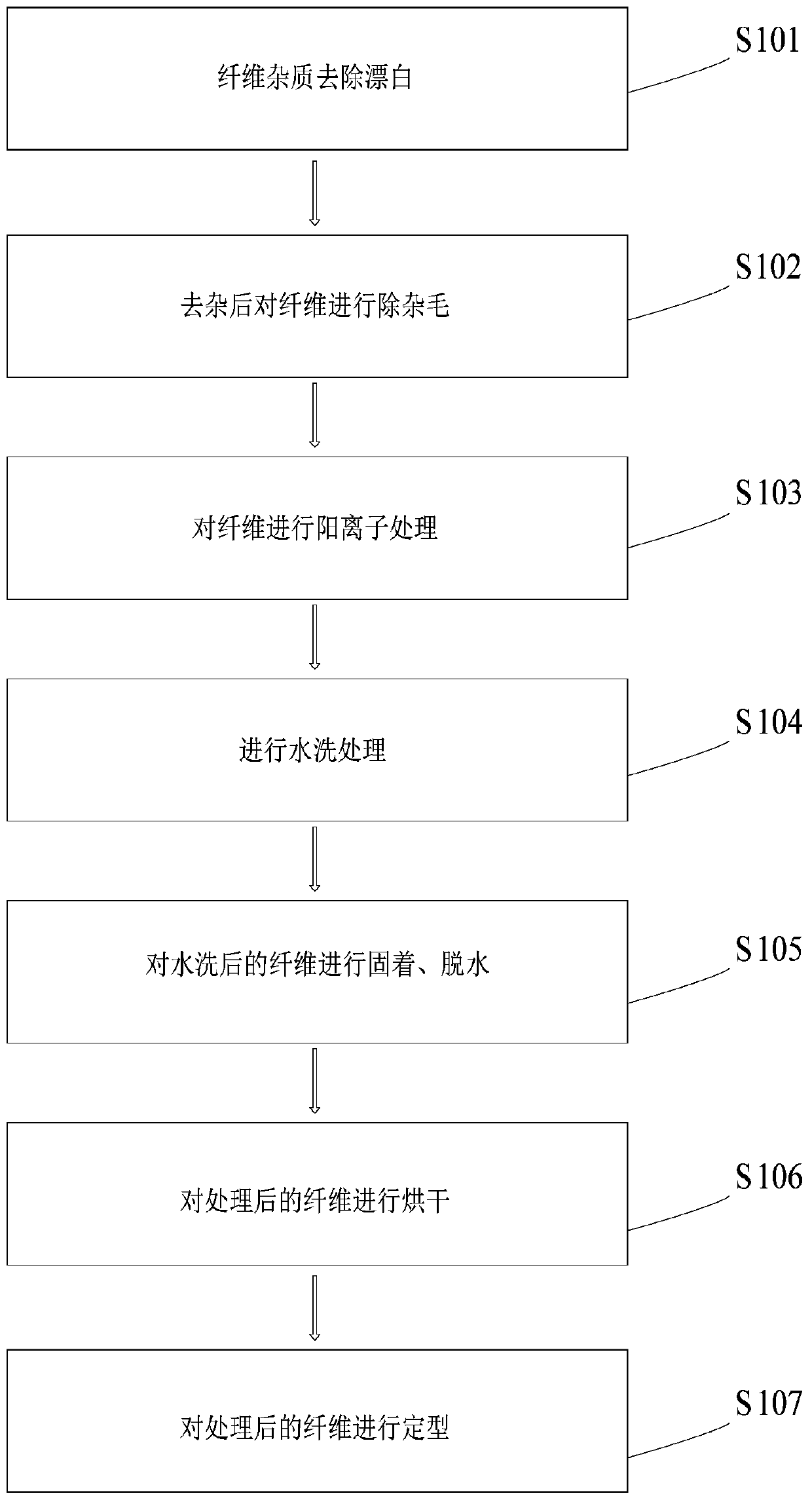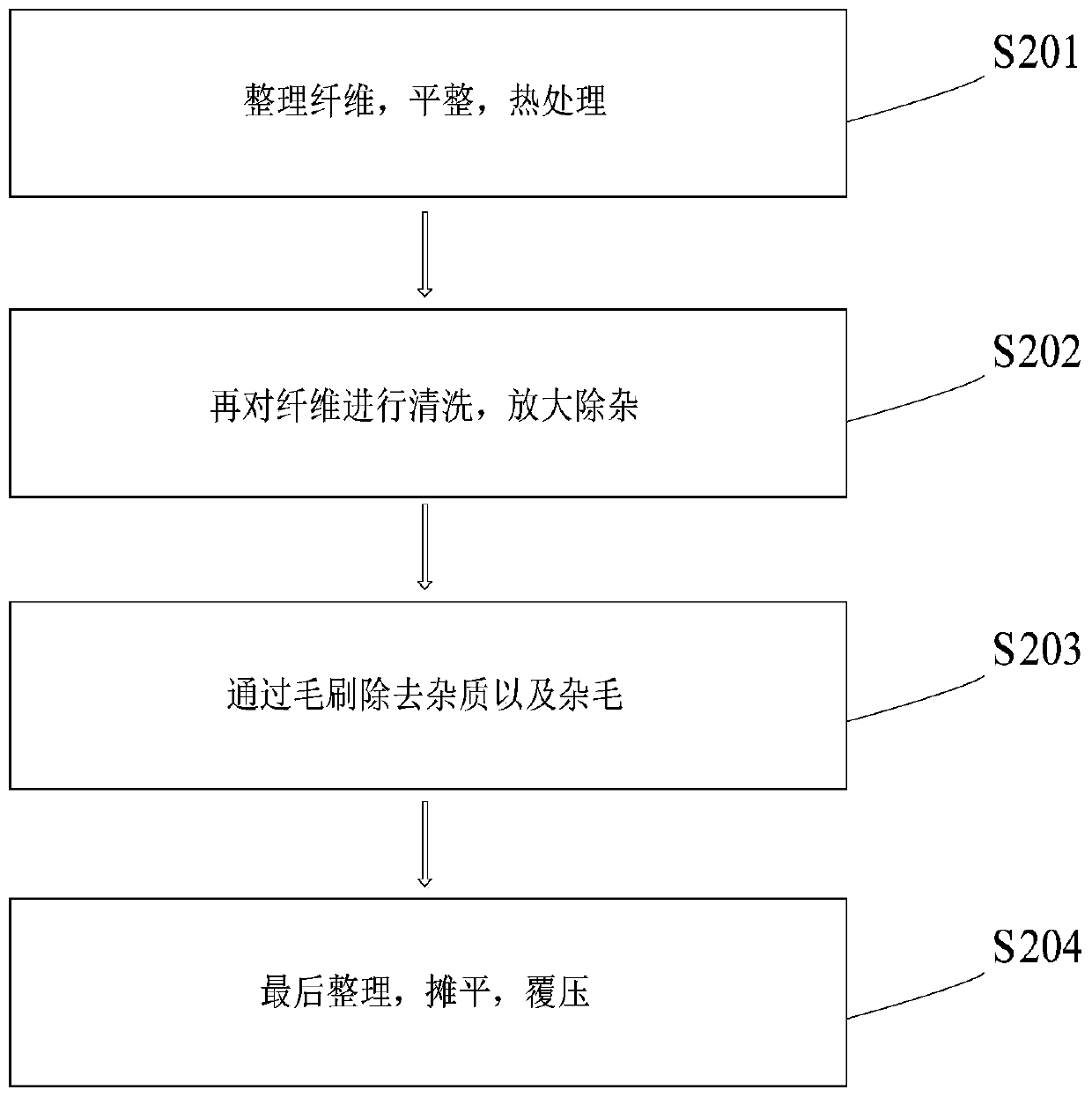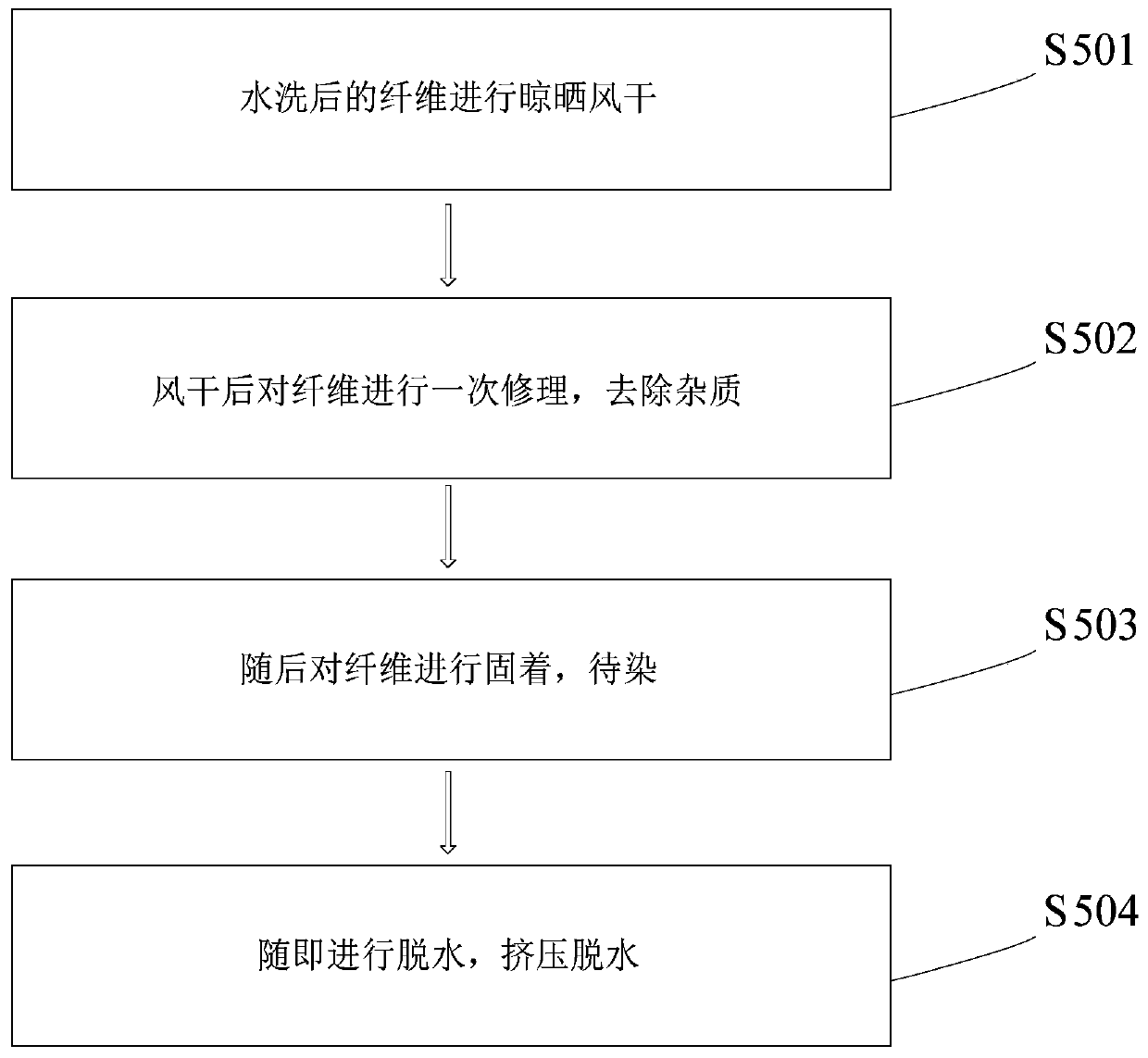Continuous pigment dyeing technology with near zero emission effect for fibers
A near-zero emission and paint dyeing technology, applied in the field of paint dyeing, can solve problems such as complexity, odor pollution, and easy-to-fading operation process, and achieve the ideal effect of near-zero emission, reduced pollution, and better dyeing effect
- Summary
- Abstract
- Description
- Claims
- Application Information
AI Technical Summary
Problems solved by technology
Method used
Image
Examples
specific Embodiment 1
[0067] 1. Remove and bleach fiber impurities, prepare a stainless steel basin, add clean water within a reasonable range, and then add white fibers within a reasonable range to stain clean, stir, put in the fiber cloth and soak for 30-35 minutes, rinse well, and remove impurities during the process. Leak the net to bring out impurities;
[0068] 2. After removing the impurities, the fiber is removed, the specific operation steps are as follows:
[0069] The first step: Place the fibers on a clean stainless steel plate, arrange the fibers, then level them with a nylon brush, and then use a hot air blower with a temperature of 15°C-20°C for auxiliary drying heat treatment;
[0070] Step 2: Clean the fiber again. When cleaning, use clean water to determine the cleaning time within a reasonable range, then use a magnifying glass to observe and enlarge, and finally remove impurities;
[0071] The third step: remove impurities and miscellaneous hairs with a brush, and then flatten the clean...
specific Embodiment 2
[0083] 1. Remove and bleach fiber impurities, prepare a stainless steel basin, add clean water within a reasonable range, and then add white fibers within a reasonable range to stain clean, stir, put in the fiber cloth and soak for 30-35 minutes, rinse well, and remove impurities during the process. Leak the net to bring out impurities;
[0084] 2. After removing the impurities, the fiber is removed, the specific operation steps are as follows:
[0085] The first step: Put the fiber on a clean stainless steel plate, arrange the fiber, then level it with a nylon brush, and then use a hot air blower with a temperature of 20℃-25℃ for auxiliary drying heat treatment;
[0086] Step 2: Clean the fiber again. When cleaning, use clean water to determine the cleaning time within a reasonable range, then use a magnifying glass to observe and enlarge, and finally remove impurities;
[0087] The third step: remove impurities and miscellaneous hairs with a brush, and then flatten the cleaned misce...
specific Embodiment 3
[0099] 1. Remove and bleach fiber impurities, prepare a stainless steel basin, add clean water within a reasonable range, and then add white fibers within a reasonable range to stain clean, stir, put in the fiber cloth and soak for 30-35 minutes, rinse well, and remove impurities during the process. Leak the net to bring out impurities;
[0100] 2. After removing the impurities, the fiber is removed, the specific operation steps are as follows:
[0101] The first step: Put the fiber on a clean stainless steel plate, arrange the fiber, then use a nylon brush to level it, and then use a hot air blower with a temperature of 25℃-35℃ for auxiliary drying heat treatment;
[0102] Step 2: Clean the fiber again. When cleaning, use clean water to determine the cleaning time within a reasonable range, then use a magnifying glass to observe and enlarge, and finally remove impurities;
[0103] The third step: remove impurities and miscellaneous hairs with a brush, and then flatten the cleaned mis...
PUM
 Login to View More
Login to View More Abstract
Description
Claims
Application Information
 Login to View More
Login to View More - R&D
- Intellectual Property
- Life Sciences
- Materials
- Tech Scout
- Unparalleled Data Quality
- Higher Quality Content
- 60% Fewer Hallucinations
Browse by: Latest US Patents, China's latest patents, Technical Efficacy Thesaurus, Application Domain, Technology Topic, Popular Technical Reports.
© 2025 PatSnap. All rights reserved.Legal|Privacy policy|Modern Slavery Act Transparency Statement|Sitemap|About US| Contact US: help@patsnap.com



